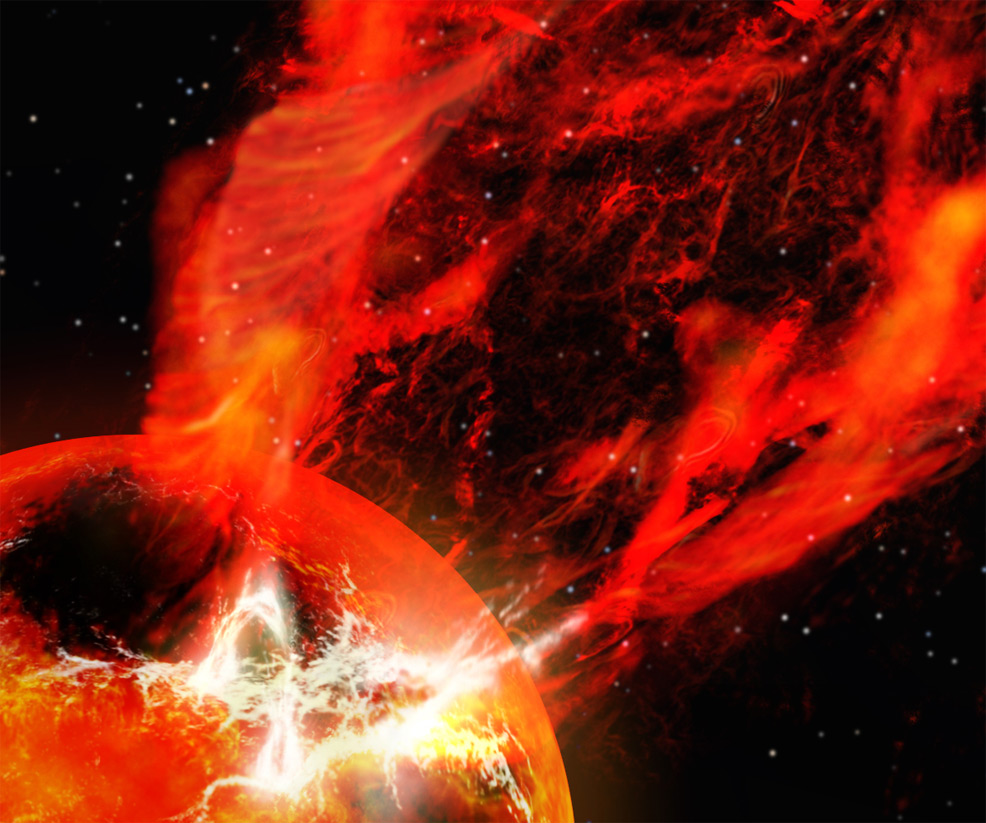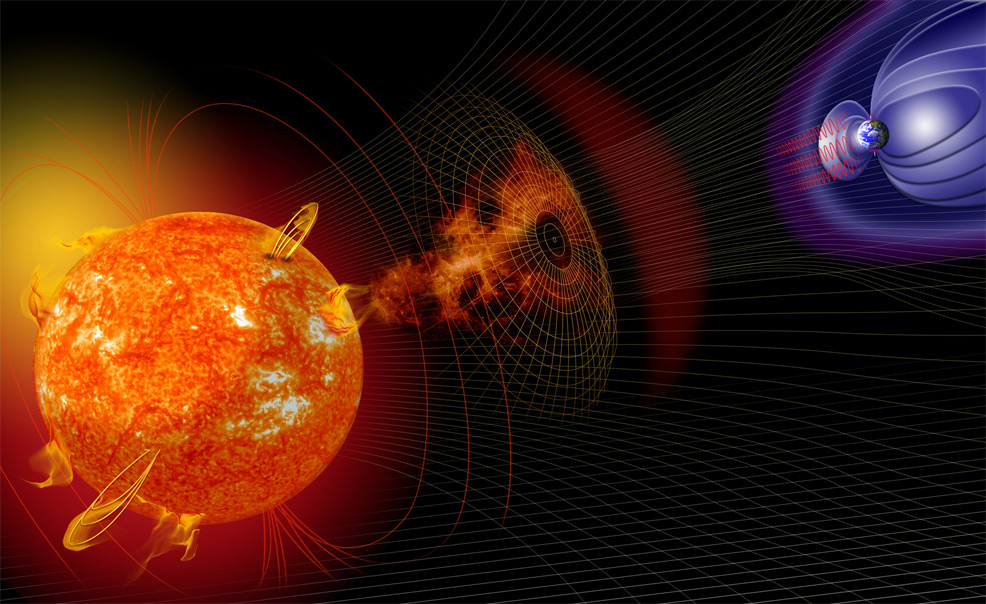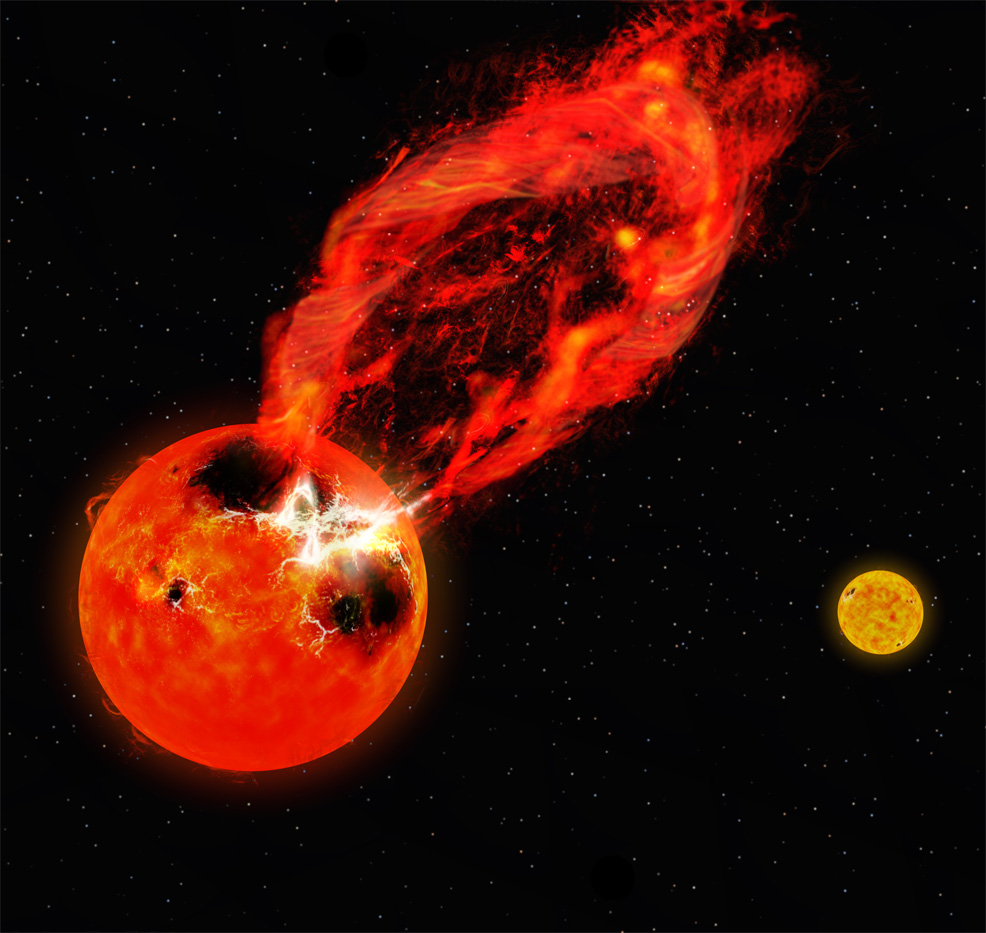
6th May 2023 Star "superflare" is one of largest ever seen A giant flare in the binary star system V1355 Orionis is one of the largest ever observed in the history of astronomy.
Solar cycles are regular and predictable patterns of activity that occur on our Sun's surface over a period of 11 years or so. These cycles are characterised by changes in the number and size of sunspots, which are dark areas that indicate increased magnetic activity. At the peak of the cycle, which lasts for a few years, the Sun is most active, with numerous sunspots, solar flares, and coronal mass ejections (CMEs) that can affect Earth's space environment. In 2019, our Sun entered Solar Cycle 25, the 25th such period since record-keeping began in 1755. As expected, the number of sunspots has been trending upwards in recent years and is expected to peak in 2025. This current cycle will then decline and reach a trough in the early 2030s. One particularly energetic flare occurred in 1859 and became known as the Carrington Event. This was so powerful that it caused auroras to be seen as far south as the Caribbean and resulted in widespread disruption to electrical systems around the world. Telegraph operators had electric shocks and some even reported equipment catching fire. In some cases, telegraph systems continued to operate even after being disconnected from their power sources, due to the strength of current induced by the solar storm. Are we overdue another Carrington Event? Some astronomers believe so. Geomagnetic storms like the one experienced in 1859 are predicted to occur every 100 to 200 years. Efforts are underway to better prepare for and mitigate the potential impacts. If an event of similar magnitude occurred today, it could have far-reaching and catastrophic consequences. The widespread use of technology in modern society, including our power grids, satellites, and the Internet, make us more vulnerable to these effects. A large-scale solar storm could trigger massive power outages, damage or destroy satellites, and disrupt communication networks, with significant economic and social disruption.
Be thankful that our Sun is relatively benign, however, because a flare of that size would be dwarfed by one seen recently in V1355 Orionis. This binary system includes both a K-type subgiant and G-type (Sun-like) star, located 421 light years away in the constellation of Orion. Astronomers from the National Institutes of Natural Sciences (NINS) in Tokyo, Japan, used simultaneous ground-based and space-based observations to capture a monster solar eruption from the larger of the pair, at least 10 times more powerful than anything ever seen in our Solar System. Their findings, which appear in The Astrophysical Journal, reveal a more complete picture of a "superflare" and provide a better idea of how these dramatic events occur. For their study, the team combined measurements from the 3.8-m SEIMEI Telescope and the Transiting Exoplanet Survey Satellite (TESS). This enabled monitoring at continuous, high temporal resolution. Data analysis showed that the superflare originated with a prominence eruption that grew to a massive size and very high velocity – possibly as fast as 1,690 km/s (1,050 mi/s), or about 0.56% of the speed of light. This meant it far exceeded the star's escape velocity of 347 km/s (216 mi/s), easily breaking free of its gravity and carrying trillions of tons of material through space. The artist's impression below gives an idea of the sheer scale involved. The K-type subgiant, pictured on the left, has a radius of 4.1R⊙ or about 4.1 times that of our own Sun. Its G-type companion on the right has a radius of 1.0R⊙ and is therefore identical in size to our Sun. It seems unlikely that humanity will ever need to worry about an eruption of this size affecting Earth, but learning about superflares could tell us more about the formation of planets in other systems and the impact on any life forming on those planets. And perhaps our future descendants may encounter such events if they spread out into the galaxy.
Comments »
If you enjoyed this article, please consider sharing it:
|









